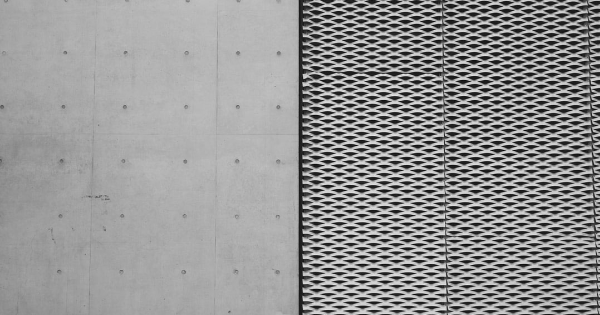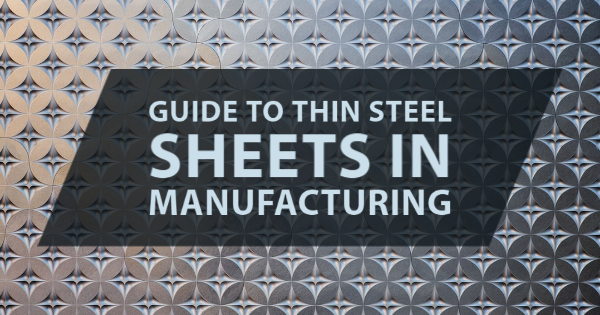What Sheet Metal Is Best For You?
Leave a Comment
The most popular metal purchases include aluminum in a tube, bar or sheet form, cold or hot rolled steel, and stainless steel. Out of these popular metals, it’s important to know the difference between them. Once you know which metal will be best suited for your needs, you can look up metal sales near me and make your purchase.
Pros of Aluminum
Aluminum is one of the most common types of metal sheets used in the manufacturing world, with 3003 aluminum being one of the commonly used types of aluminum in manufacturing. With aluminum, it has more elasticity and is more malleable than steel. Though there are some exceptions to this with certain aluminum, like 6061 aluminum. However, there are more types of aluminum that have more elasticity than steel. Aluminum has a high weight ratio/strength while being an excellent conductor of electricity and heat. This metal is found to be cheaper than stainless steel, making a good option when searching for metal sales near me.
Cons of Aluminum
While aluminum has a great number of benefits, there are a few cons to this metal. Aluminum is much more likely to deform and warp when in heat over 400 degrees Fahrenheit. Because aluminum is a high conductor of heat, it can make this metal harder to weld. It’s also unable to be used in culinary tools, as aluminum has reactions with food products.
Pros of Stainless Steel
Unlike aluminum, stainless steel is easier to weld with. Stainless steel is a combination of steel that contains at least 10.5% of chromium. This means that the chromium supplies the steel with an added benefit of more corrosion resistance. With chromium, there is an added sheen to the materials, making it a more aesthetically pleasing option. Stainless steel is much harder than aluminum. Because it’s harder than aluminum, stainless steel is less likely to warp and deform under any kind of force or high temperature. Stainless steel having higher heat resistance than aluminum means that in situations where sanitation is important, stainless steel is the better option.
Cons of Stainless Steel
With aluminum being the cheaper option, stainless steel is the more expensive option. The cost of stainless steel can vary depending on the metals that the steel has been combined with, chromium being an example. The more metals that are combined with the stainless steel, the more expensive the already high costing metal becomes. The weight/strength ratio is very low as well, meaning that stainless steel is not only very hard, it’s extremely heavy as well. This makes maneuvering this metal more difficult than it would be maneuvering aluminum.
Pros of Carbon Steel
Both low carbon steel and high carbon steel are the cheapest options out of these metals, cheaper than aluminum. Low carbon steel is very easy to make, due to the carbon levels being lower. This kind of steel is very easy to weld with and shows both great durability levels along with good heat transfer levels. Low carbon steel is a very popular option because of these benefits. With high carbon steel, this material is more durable than both stainless steel and aluminum. With its high durability, it is improbable that this material would warp or deform under high heat temperatures.
Cons of Carbon Steel
With low carbon steel, it has less strength than stainless steel. This kind of metal is susceptible to corrosion, making it a bad option for any kind of water setting. With high carbon steel, the high carbon content can cause brittle metal. This type of metal isn’t corrosion resistant either and needs to be finished or painted in order to prevent deforming or rusting.
When searching for metal sales near me, these are the kinds of facts that should be taken into consideration. By having an increased knowledge of these metals and their uses, looking for “metal sales near me” will be a much easier process.
Guide to Thin Steel Sheets in Manufacturing
Leave a Comment
Thin sheet metal is the basis for many engineering projects. Thin metal strips are used in cars, furniture, and electronics. Its use accounts for approximately $30 billion in revenue across the country. Here is a guide to the use of thin steel sheets in the engineering and manufacturing process.
What is Sheet Metal?
Sheet metal comes in many forms and shapes and consists of any metal with a thickness between 0.5 to six millimeters. In engineering and manufacturing, thickness for a thin steel sheet can also be measured by gauges. A gauge measures the metal’s thickness by its relation to its weight per square foot. The higher the gauge number, the thinner the metal is. The thickness for the same gauge can be different for various metals such as aluminum and stainless steel.
Common Materials
There are various metals that can be used for engineering in the form of sheets. The metal you choose depends on your product’s requirements and application. A thin steel sheet has high durability and tensile strength. Copper and brass are typically used as decorative layers.
Sheet Metal Production Process
Hot rolling and cold rolling are the two ways that sheet metal is produced. Cold rolling typically only produces sheet metal for construction steels up to three millimeters in thickness. Hot rolling is used for greater thicknesses because it’s more cost-efficient.
When it comes to engineering projects, cold-rolled steels are more preferred for precision applications. This is because it gives engineers greater control over the final dimensions. With hot-rolled steels, the metal can shrink slightly and change its shape after cooling.
Sheet Metal Forming Processes
The choice of forming process for sheet metal you choose will depend on the cost, metal availability, and your desired outcome. Sheet metal bending applies stress to the metal to end until plastic deformation is reached. This prevents the thin metal sheet from returning to its former shape. Sheet metal curling creates a circular ring at the edge of the sheet metal for safer handling. Camber is removed from sheet metal through the process of decambering.
In deep drawing, the shape of the sheet metal is molded using a series of dies in multiple stages. The sheet can be converted into various shapes such as automobile parts, sinks, and fuel tanks during large batch productions. Sheet metal expanding is commonly used to create a self-draining product such as catwalks, platforms, and fences. These are just a few of the many various sheet metal forming processes that can be used for manufacturing and engineering projects.
The possibilities are endless for the use of thin metal sheets in the manufacturing process. Thin steel sheets offer the greatest durability and strength for any project. For more information on thin metal sheets for your production process, contact Thin Metal Sales today.

